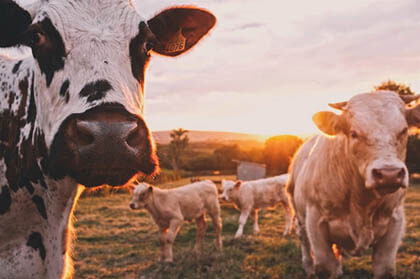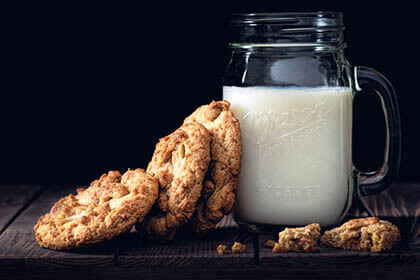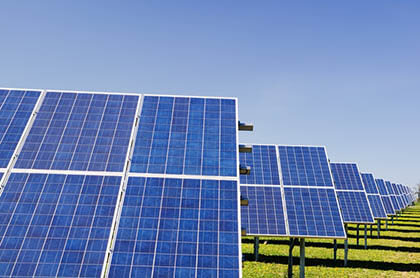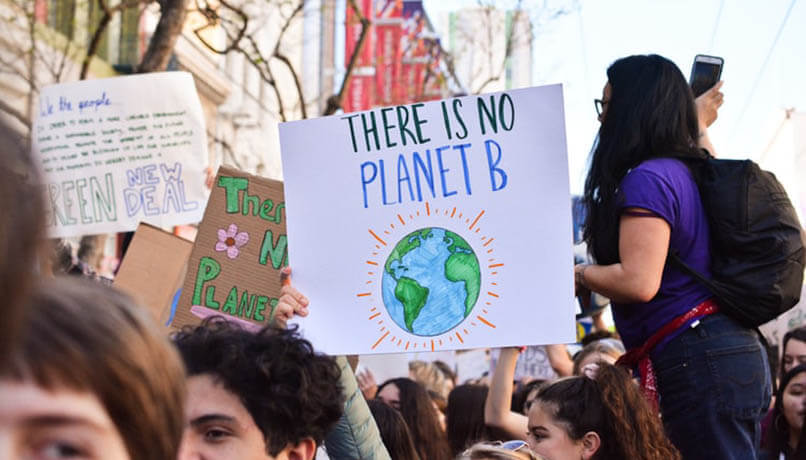Climate change is, and has been for some time, a huge issue facing our planet. Every day we are learning more and more about the impact our practises as a population are having on the environment, and we constantly have to think of new and innovative ways to play our part and do what we can to reduce our carbon footprint.
Whether we want to admit it or not, the hospitality industry has likely always been a significant contributor to this problem through the way we buy into the amount we throw out. I have touched on these issues in a previous blog, and in the way we operate generally. The good news is that we are all waking up - in fact, we did some time ago! But there is, of course, much more we can do and must do in the years to come. I think the most effective way we as individual businesses can work to combat climate change is to think of the front and back of house as two separate systems working together to produce the best results. We already strive to achieve this regarding customer service and satisfaction - so why not use this same system to try to reach daily/weekly environmental goals?
But there is, of course, much more we can do and must do in the years to come. I think the most effective way we as individual businesses can work to combat climate change is to think of the front and back of house as two separate systems working together to produce the best results. We already strive to achieve this regarding customer service and satisfaction - so why not use this same system to try to reach daily/weekly environmental goals?
The following are a few ideas I would implement as a restaurant owner/manager or a head chef going forward.
The Kitchen  1/3 of global GHG emissions come from the food system. It is crucial that chefs become more aware and think more about how better food and farming can help the health of people and the planet. This can be recognised and acted upon by buying in quality goods that have been produced responsibly.
1/3 of global GHG emissions come from the food system. It is crucial that chefs become more aware and think more about how better food and farming can help the health of people and the planet. This can be recognised and acted upon by buying in quality goods that have been produced responsibly.
'Meat' is typically the most GHG intensive part of our diet, accounting for at least 14.5% of global GHG emissions - as significant as emissions from transport - wow! We haven't a hope of avoiding catastrophic climate change if we continue to ignore the impact of the meat in our diets. One vital, simple step is for people in high consuming countries, including the UK, to eat less and better meat and a greater variety of plant-based foods.  Recent research says that reducing meat & dairy consumption by half would not only reduce the risk of heart disease and cancer but would also cut GHG from agriculture by up to 42%! This is a no-brainer, and from a chefs point of view it means turning a corner and producing menu's that have fewer meat options, and any that are available are good quality, lean cuts. There is also much to promote about creative, delicious vegetable-inspired dishes with their positive health messages – rather than a message of perhaps 'going without'.
Recent research says that reducing meat & dairy consumption by half would not only reduce the risk of heart disease and cancer but would also cut GHG from agriculture by up to 42%! This is a no-brainer, and from a chefs point of view it means turning a corner and producing menu's that have fewer meat options, and any that are available are good quality, lean cuts. There is also much to promote about creative, delicious vegetable-inspired dishes with their positive health messages – rather than a message of perhaps 'going without'.
Putting these choices higher up on menus or more upfront on food service counters – rather than a hidden away 'vegetarian' section can create change by stealth. Also not to forget the all-important business case here - serving less meat means more to spend on upgrading to a 'better' meat offer!  Several restaurants around the UK, large or small, have also signed up to the 'Too Good to Go' App. I love this idea as it allows people to purchase leftover food at a great price while at the same time helping businesses reduce their daily food waste! This is an idea that is catching on fast and is a win win for everybody! I would encourage all head chefs out there to sign up. Why not?
Several restaurants around the UK, large or small, have also signed up to the 'Too Good to Go' App. I love this idea as it allows people to purchase leftover food at a great price while at the same time helping businesses reduce their daily food waste! This is an idea that is catching on fast and is a win win for everybody! I would encourage all head chefs out there to sign up. Why not?
The Restaurant
From the front of house perspective, it is of course all about selling and the selling of locally sourced, healthier meals. I am not suggesting that meat dishes should be abandoned entirely or consumers discouraged - absolutely not! It is just more about upselling and 'pushing' all options equally with more emphasis on the 'healthy, delicious' alternatives.  From May this year, a program was launched in San Francisco, California with the idea of charging diners an optional 1% surcharge to help fight climate change. This initiative has proved very popular in the US, and I think (I hope) the idea will quickly spread across the globe. This will, of course, generate extra funds for our' powers that be' to be able to utilise in new, inventive ways.
From May this year, a program was launched in San Francisco, California with the idea of charging diners an optional 1% surcharge to help fight climate change. This initiative has proved very popular in the US, and I think (I hope) the idea will quickly spread across the globe. This will, of course, generate extra funds for our' powers that be' to be able to utilise in new, inventive ways.
Reducing energy usage
Reducing your energy use within a restaurant and indeed on an entire business premises is, of course, another contributory way of helping the environment. Action can immediately be taken here by carrying out an energy audit. This is done by gathering electricity/gas bills from the last few years and tracking usage on a spreadsheet. If the business pays bills online, many suppliers include usage charts for the past year and even weekly or daily snapshots. Once the usage is known, it can be better tracked, and steps can be taken to reduce bills.  In 2016, to help focus attention on what's needed to shift our eating habits, the 'Eating Better Alliance' launched its policy recommendations. In it, they stated "we're delighted that the Sustainable Restaurant Association is one of the 47 environmental, public health, animal welfare and responsible food organisations backing the alliance's proposals. These include putting food and agriculture centre-stage in strategies to tackle climate change; updating the UK's official healthy eating guide – the eat well plate – for sustainability and introducing healthy & sustainable procurement standards for public sector caterers including hospitals".
In 2016, to help focus attention on what's needed to shift our eating habits, the 'Eating Better Alliance' launched its policy recommendations. In it, they stated "we're delighted that the Sustainable Restaurant Association is one of the 47 environmental, public health, animal welfare and responsible food organisations backing the alliance's proposals. These include putting food and agriculture centre-stage in strategies to tackle climate change; updating the UK's official healthy eating guide – the eat well plate – for sustainability and introducing healthy & sustainable procurement standards for public sector caterers including hospitals".
"We can't legislate for behaviour change – but food companies have an important role in changing the food choices we're offered. The restaurant sector and chefs are at the forefront of creating this necessary shift in our food culture".
I have to say I couldn't agree more!
For more expert sustainability tips, check out our 6 Simple Steps to Increase Your Restaurant's Sustainability bu clicking here!
.png?width=1571&height=766&name=CFD%20knife%20and%20fork%20logo%20(carbonfriendlydining.org).png)


